Godda. Jharkhand.
Over 350-km from the state capital Ranchi, up the hills of Godda district in northeastern part of Jharkhand, lies Muchura Daldali — a small village of 18 households with a total population of 167. All the residents belong to Paharia tribe, a particularly vulnerable tribal group, dependent on the forest and forest produce for its livelihood.
“We are all Paharia and depend on the hills [pahad in Hindi] for our livelihood and survival,” Chandradev Malto, a resident of Muchura Daldali told Gaon Connection. “We collect and sell mahua [Mahua longifolia]. During semal [Bombax ceiba] season, we collect its cotton and sell it. Mostly, all through the year, we sell wood to earn two meals a day. Only sometimes we get daily wage works or works under the MGNREGA [Mahatma Gandhi National Rural Employment Guarantee Act ],” he added.
Believed to be the earliest inhabitants of the region, Paharia once ruled the hills of present day Santhal Pargana division in Jharkhand. Santhal Pargana covers six districts of the state — Godda, Deoghar, Dumka, Jamtara, Sahibganj and Pakur.
Today, Paharia have been reduced to mere 90,761 people in the state, alienated from their forests and struggling poverty, malnutrition and human trafficking. Their voices remain unheard in the upcoming Jharkhand Assembly Elections.
According to Malto, over the last few decades, his tribe members have been disassociated from their pahad and forests. And, this has had a direct impact on their livelihood and health.
“Earlier, we used to eat fruits and flowers from the forests. Our staple diet was makai bhaat (corn rice), makai roti and some local fruits, which were highly nutritious. But now we are dependent on the market or the government doles [public distribution system rice],” said Malto.
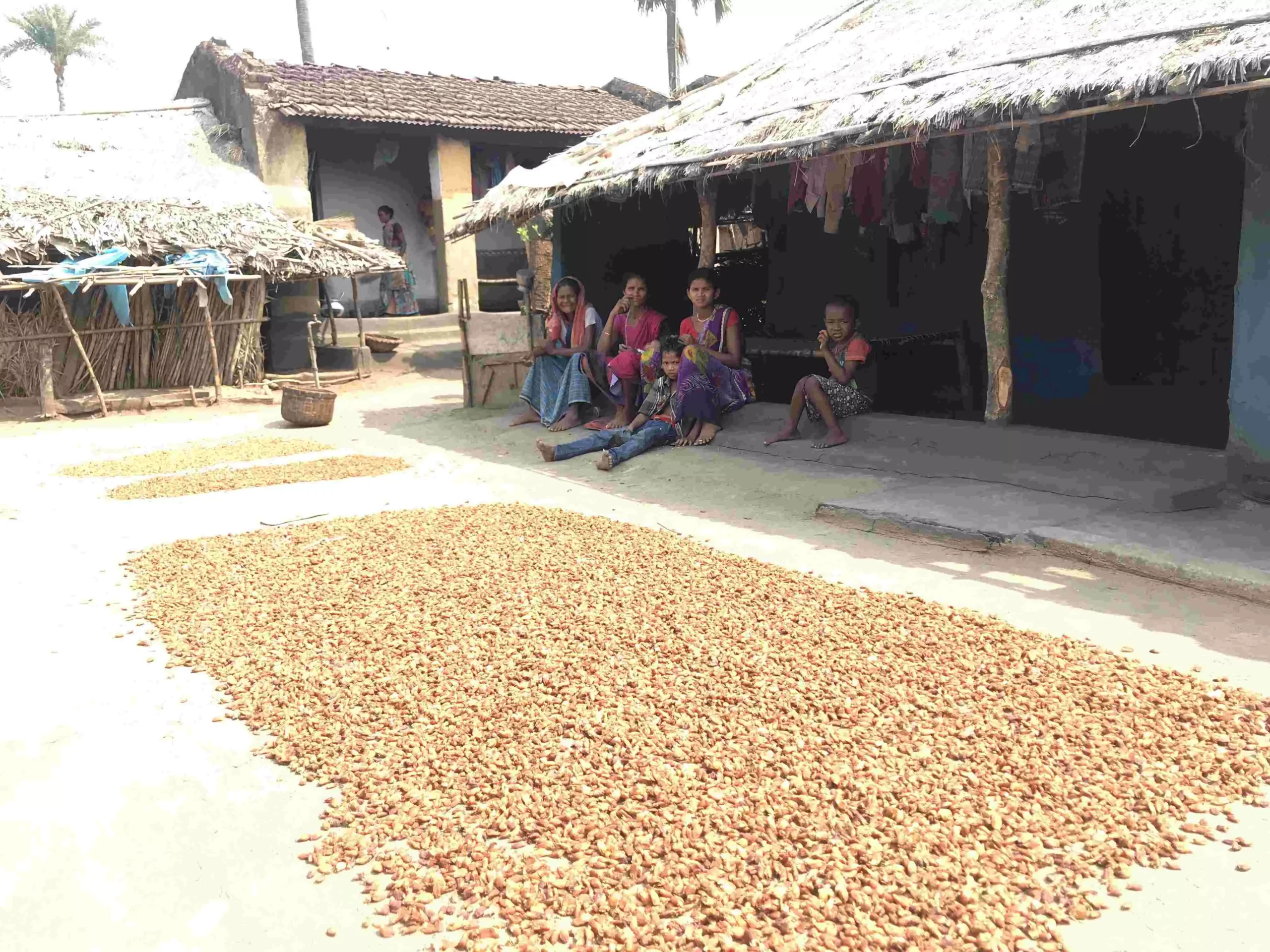
Paharia are reduced to mere 90,761 people in Jharkhand, struggling poverty, malnutrition and human trafficking. Pic: Nidhi Jamwal
Traditionally, Paharia used to practice shifting cultivation in the forest areas, which is now viewed as a ‘destructive’ practice. They don’t own agricultural land and their access to forests has reduced drastically forcing menfolk to migrate in search of work. Women and children are left behind to fend for themselves.
“Some five years back, two-three children died in the village due to pooni rog [local name for malnutrition]. Even now three kids in the village are labelled malnourished. They were in ‘red’ category of pooni rog,” informed Neeraj Kumar Thakur, an activist who works in the village. Red category of malnutrition refers to severe acute malnutrition, a life-threatening health condition.
Till the deaths of malnourished children in the village, there was no anganwadi (government care centre for children till six years of age) in Muchura Daldali. “Even for vaccination villagers had to take their children three kilometres away to Bador. Now, an anganwadi has been set up in the village, but it functions only two to three days in a week and that also for a few hours in the morning,” said Thakur.
Paharia, from rulers to a vulnerable tribe
Jharkhand has 32 tribal groups of which nine are identified by the Union ministry of tribal affairs as particularly vulnerable tribal groups, commonly known as PVTGs. These tribal groups are considered highly vulnerable because of low literacy, economic backwardness, declining or stagnant population, and pre-agricultural level of technology. Jharkhand’s Paharia tribe is a PVTG.
Some researchers note the term Paharia is drawn from the word pahar i.e. hill and refers to the people living in the mountains. Others claim the origin of term Paharia is from pahara i.e. keeping guard or people who used to keep a guard.
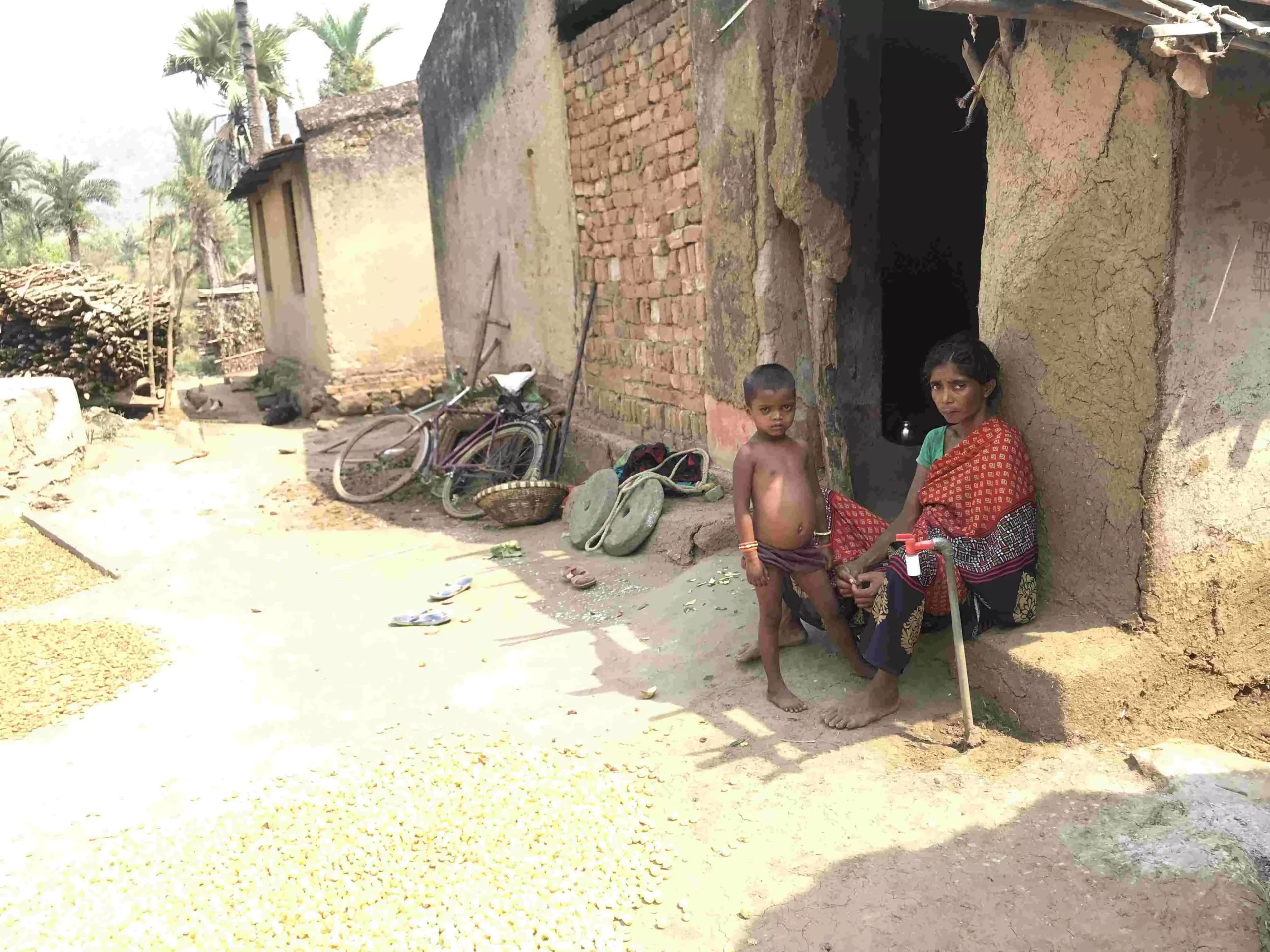
Jharkhand has 32 tribal groups of which 9 are identified as particularly vulnerable tribal groups. Paharia is one of them. Pic: Nidhi Jamwal
Broadly, two types of Paharia are found in the state — Sauria Paharia (also known as Maler Paharia) and Mal Paharia. Both these groups of Paharia tribe have several sub-tribes.
According to the District Census Handbook Godda (Jharkhand), Census of India 2011, the records show the Malers or Sauria Paharias were early settlers of the area who still inhabit the Rajmahal hills in Santhal Pargana. Of the total schedule tribe population of 279,208 in Godda district, Mal Paharia and Kumarbhag Paharia are 16,183 (about 5.8 per cent), and Sauria Paharia are 13,688 (4.9 per cent).
Proceedings of the Indian History Congress , Vol 61 reads: “[Paharias] have always tried to defend their freedom and identity, fiercely resisting Hindu, Afghan and Mughal rulers who invaded their land. They also rose against the British colonial rule, and participated in successive phases of the nationalist movement from 1919 onward.”
Something similar is recorded in the District Census Handbook Godda: “In Santhal Pargana division, British were up against a band of simple but determined opponents, the Paharias, who were great lovers of freedom and could not tolerate any intruders in their homeland. Warren Hastings organized in 1772 a special cops of 800 men to curb the Paharias.”
“Paharia claim to be a Dravidian warrior race, which had its own Maler kingdom. There was also Shankara state with its capital in Gando [Dumka district] ruled by Paharia. These states and kingdoms broke down under British attack. The British used Santhal tribe people to push Paharia up the hills where they lead isolated lives,” narrated Neeraj Kumar, director of SATHEE (Society for Advancement in Tribes, Health, Education & Environment), a Godda-based non-profit working with the Paharia community. Kumar has published some books on the Paharia PVTG and other local tribal groups.
The special rights of Paharia were recognised even after the Independence. In 1949, the Santhal Parganas Tenancy Act, 1949 was enacted providing legal framework governing the land systems in the Santhal Pargana. Among many others things, it said “no settlements of vacant holding and wasteland in a Paharia village with a non-Paharia”.
According to Kumar, Pahadia had their own traditional governance system that was recognised both at social and administrative level. “At least 26 sections of the Indian Penal Code were controlled by the sardars [heads] of Pahadia tribe who could give justice on those matters. These orders and verdicts were recognised by the sub-divisional magistrate. But, these powers have been systematically weakened,” said Kumar.
A 2008 publication of UNDP, ‘Paharias: The struggle of a tribe for recognition’, reads: “The Paharias are an extremely marginalised community. Their elaborate/involved interactions with the forest has both been a foundation of their symbiotic bond and for their bodily and cultural survival. Living with the forest, they are not oriented to live out of it and fail to cope with the outside world.”
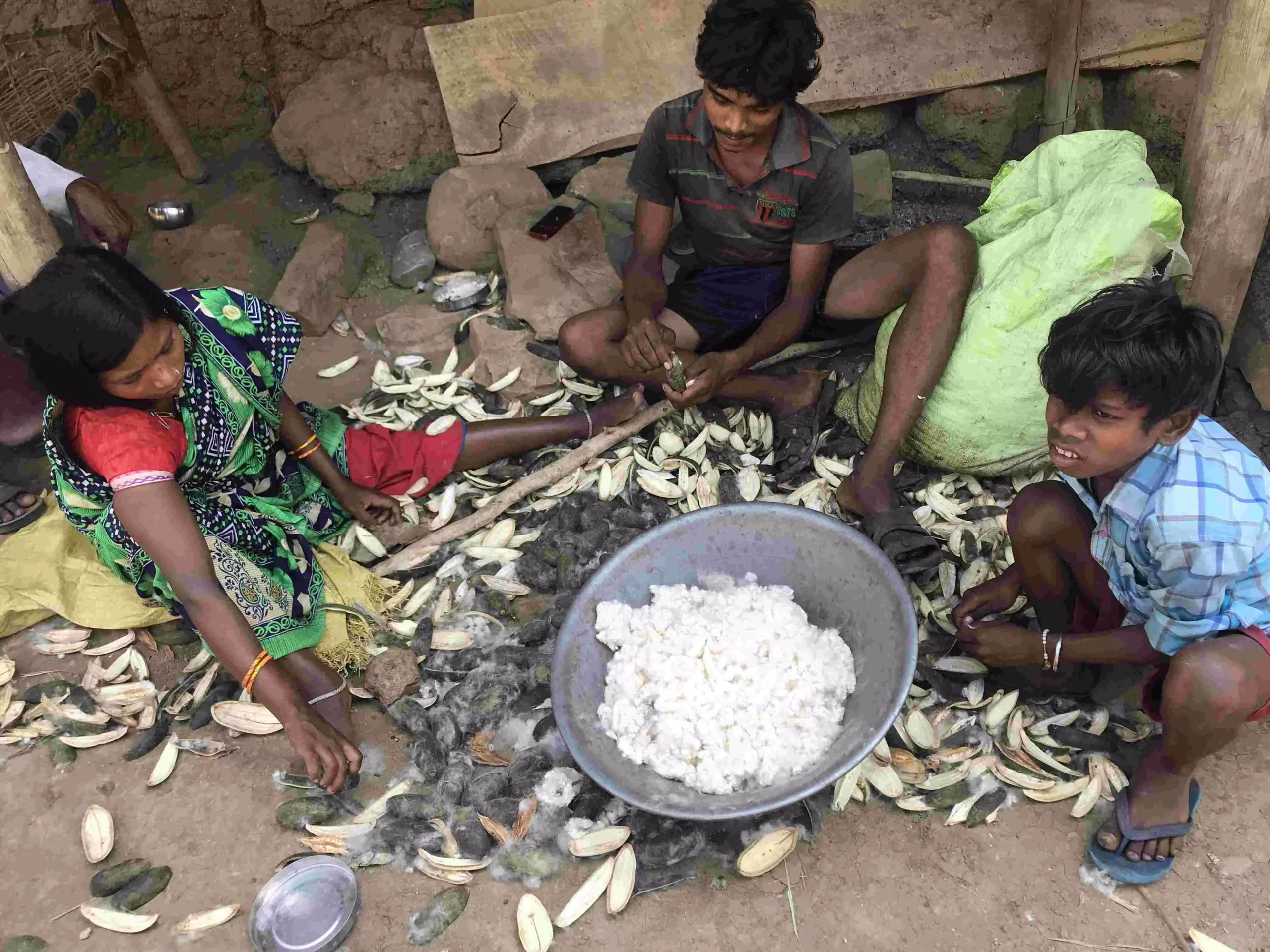
Living with the forest, Paharia are not oriented to live out of it and fail to cope with the outside world. Pic: Nidhi Jamwal
Malnutrition, a serious threat
“Because of kamzori [poverty], we are not able to eat enough food. We mostly eat rice and potato, so our kids are weak. Yes, we have pooni rog in our village,” Chhota Chandu Paharia, a resident of Muchura Daldali village told Gaon Connection.
When Gaon Connection visited the village, three children were confirmed cases of malnutrition.
“A couple of months back, during regular screening, we found three children in red category of malnutrition. One of them was taken to the government MTC [malnutrition treatment centre] and provided treatment,” informed Stanis Louis Murmu, who works as a cadre with SATHEE. But, two other toddlers — Laxmi and Roshani — are still in yellow category of malnutrition (moderate malnutrition).
“A child in red category of malnutrition can be admitted at MTC for 15-22 days where he/she is provided with nutritional meals and some supplements. But, no such care is available for yellow category children. They are only entitled to extra ration under the ICDS [Integrated Child Development Services] through anganwadi,” said Murmu.
Since most Paharia menfolk migrate for work, women find it hard to leave home and other children, and stay at the MTC with sick child for 15-20 days.
Also, the condition of local anganwadi, through which various ICDS services are offered to the Paharia people, is pitiable. “Under the ICDS, there are six programmes, but only two or three are being implemented regularly in tribal areas of Santhal Pargana. There is a lack of human power and even when human power is available, the anganwadi staff does not have the capacity to delivery required services,” said Kumar.
In the case of Muchur Daldali village, the anganwadi one poshan sakhi and a sevika (worker). Latter rarely reports for work, complained Thakur. “In the recent past, the gram sabha has tried putting pressure on the anganwadi staff to provide supplementary nutrition and double ration, especially for the severely malnourished, and their timely referral to the MTC,” he added.
Villagers alleged the anganwadi was opened only two to three times in a week and that also only for a couple of hours in the morning.
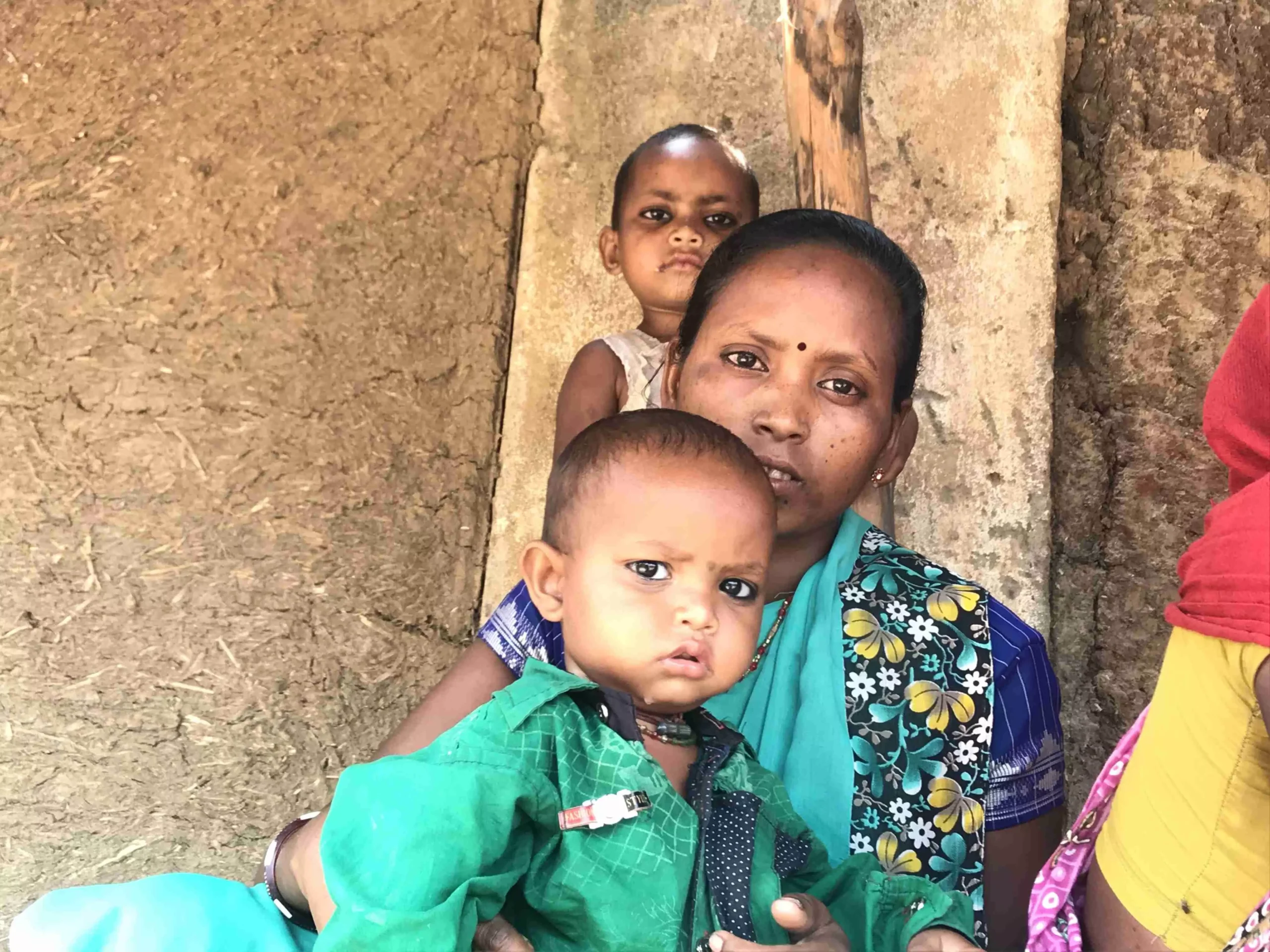
Malnutrition among Paharia children is a serious problem. Pic: Nidhi Jamwal
According to Kumar, the problem of malnutrition started aggravating in the 1980s when several environment protect rules came into force, thereby alienating the local tribal communities from the forests, which were traditionally their homes and sustained them. Slowly, Paharia became dependent on market-oriented food or government provided grains.
Villagers agree. “We can no more access forests the way our forefathers used to. We are now dependent on mahajans [local money-lenders]. Most men migrate not knowing if and when they will return home,” said Malto.
The health of Paharia needs serious attention. A June 2017 study, ‘Quality of life of elderly Man Paharia in Jharkhand’, published in Asian Journal of Multidisciplinary Studies, noted majority of Mal Paharia people in Jharkhand lived under abject poverty and are in debt in the hands of local moneylenders and agents. Its also documented a large number of elderly Paharia were still very far away from health facilities.
Drought and trafficking
Malnutrition aside, human trafficking is another serious problem in Paharia tribe. And, repeated droughts in the state have made matters worse. Earlier this year, Gaon Connection reported how the state was facing acute drought due to successive years of scanty rainfall.
“Poverty and recurring droughts lead to trafficking of Paharia tribe girls. We have recorded during a drought year, there is three times increase in trafficking of girls,” said Kumar. According to him, during drought, the outside dalals [brokers] get active and trap girls and their families with promise of a job. Once these girls leave their village, they undergo both physical and mental exploitation.
For instance, in 2015, a 12-year-old Paharia girl from Godda was trafficked and rescued three years later from Faridabad in Haryana. She had stab injuries with pus and was diagnosed with tuberculosis and later died.
In 2013, a UN report on human trafficking highlighted how tribal people in Jharkand, including ‘endangered’ Paharia, were victims of trafficking.
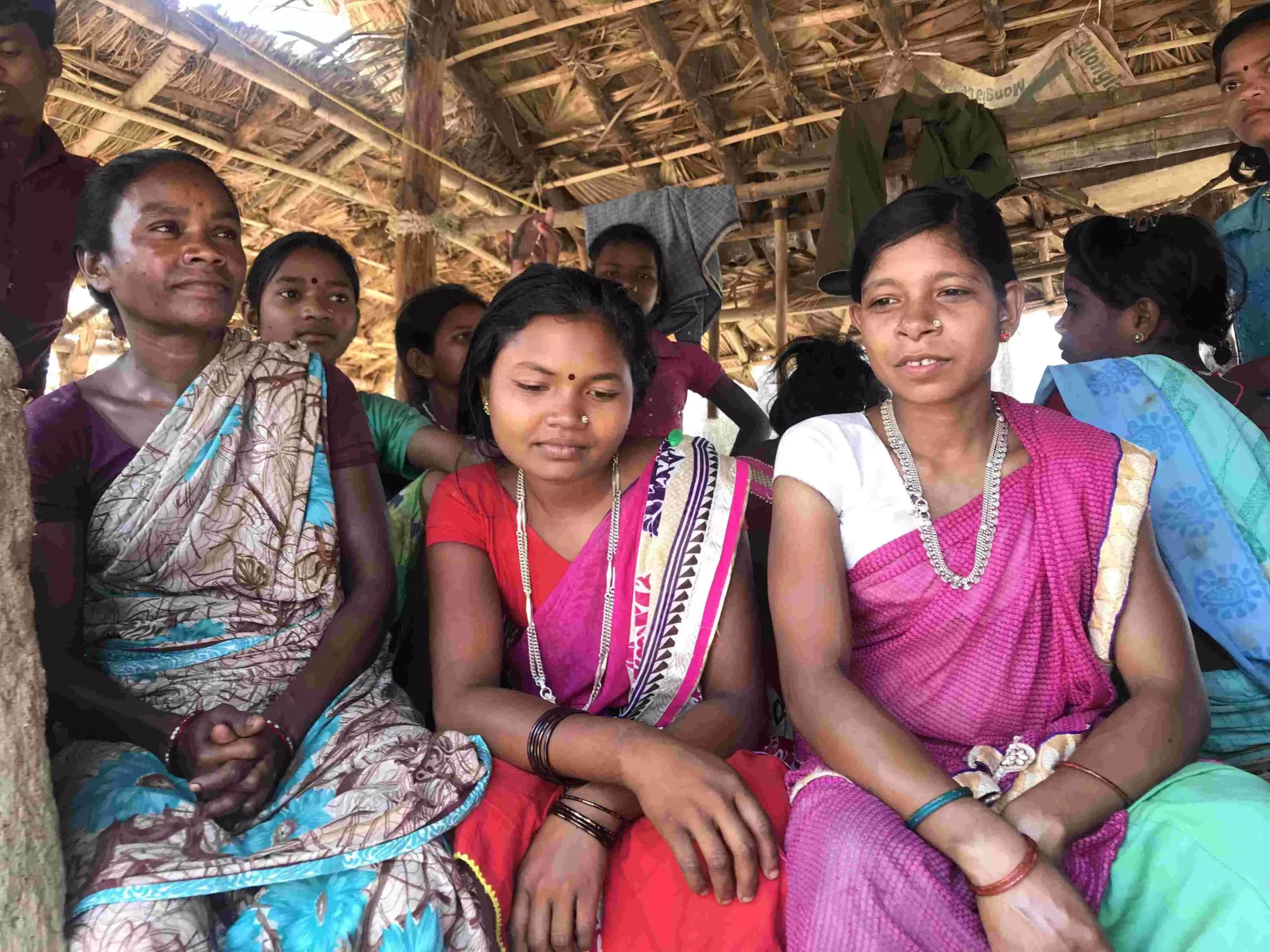
Poverty and recurring droughts lead to trafficking of Paharia tribe girls, which increases three fold in drought years. Pic: Nidhi Jamwal
Another report by Shakti Vahini reads: “Trafficking of children from Jharkhand mostly takes place through the well organized placement agency rackets in Delhi. These placement agencies supply tribal children to the homes of National Capital Region consisting of Delhi, Faridabad, Gurgaon and Noida. These agencies mostly target the children of age group 11-16 who remain tight lipped even after exploitation. The trafficked victims are kept in congested rooms, fed barely enough for survival till they are placed somewhere. The luckier ones land in a ‘kothi‘ as a domestic help. The others are sold in marriage or to a brothel where they suffer never-ending abuse in all forms.”
To address the issue of malnutrition among Paharia, SATHEE is promoting the concept of kitchen gardens in Muchur Daldali village. “Right next to their huts, we are helping the tribal people grow local vegetables, which they can consume as part of their daily diet. The villagers have also created a local grain bank to assist families who may have a shortage of food at home,” informed Murmu.
But, the vulnerable Paharia tribe needs much larger interventions, at the State level, if it has to survive extinction.
Read Also: Climate change hits Himachal’s famous apples, causes risk of frequent floods
Read Also: Assam most vulnerable to climate change in the Indian Himalayan Region




















